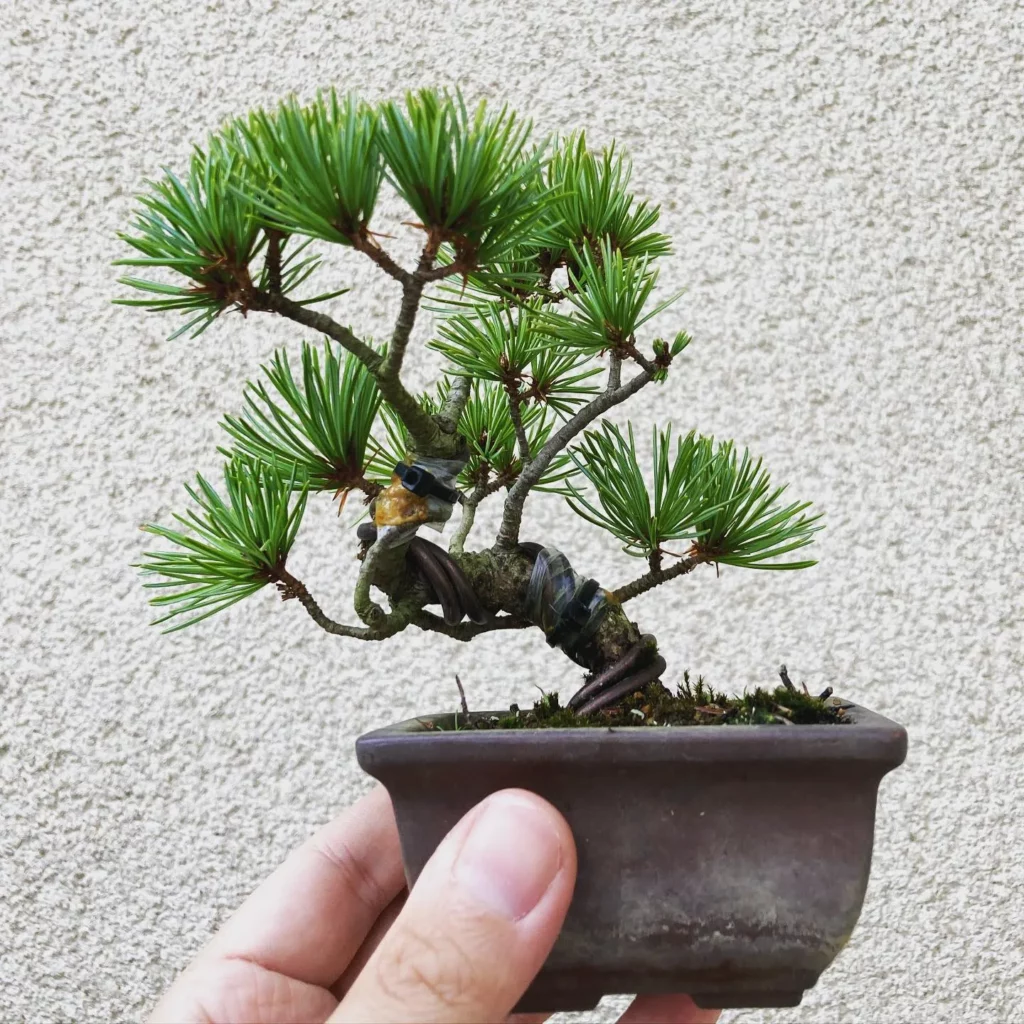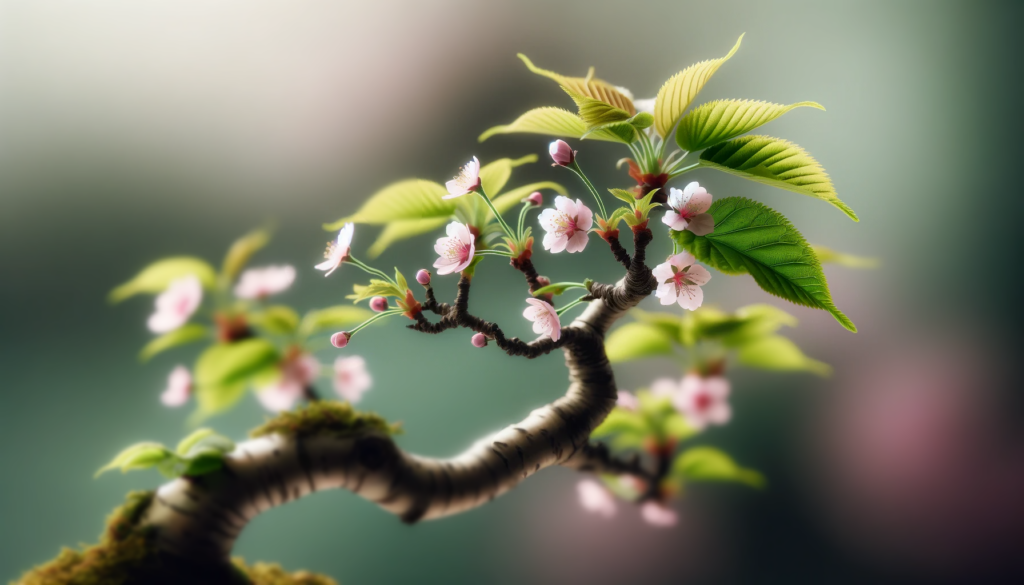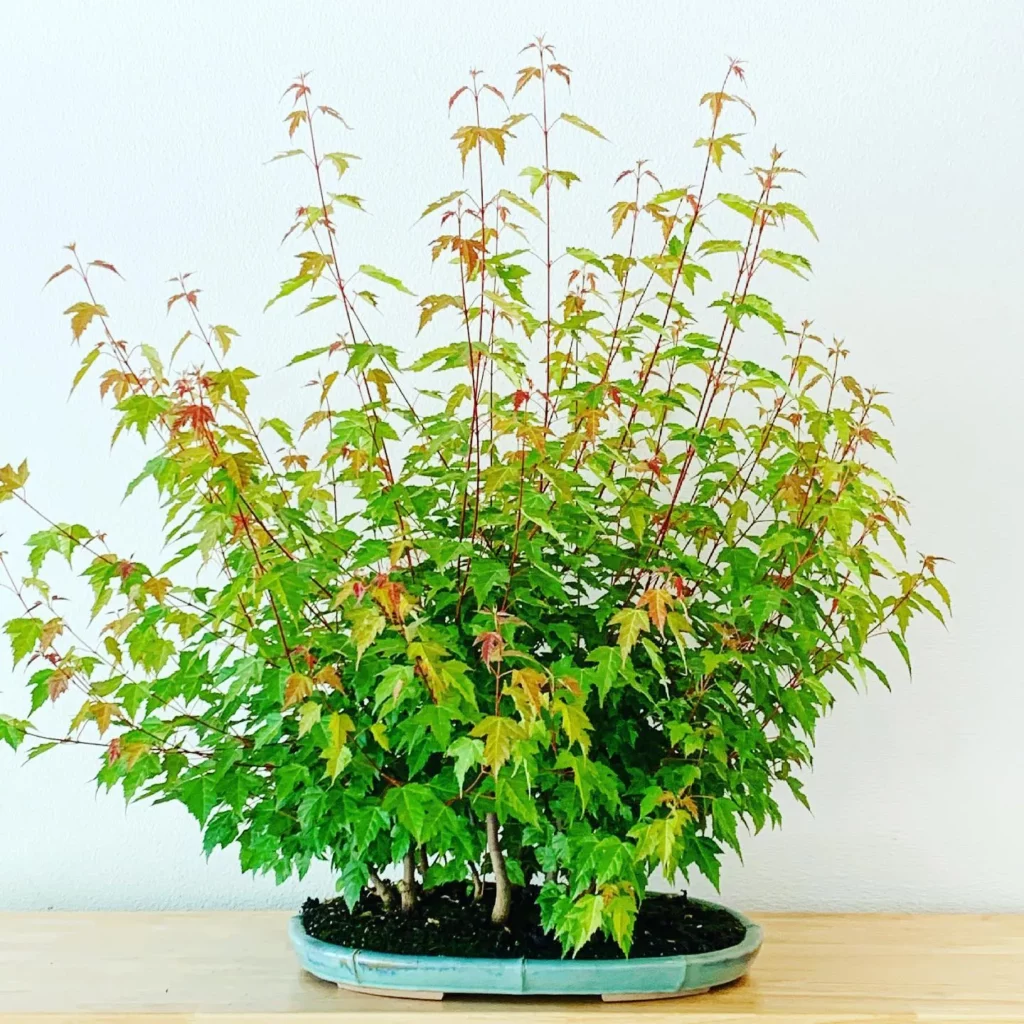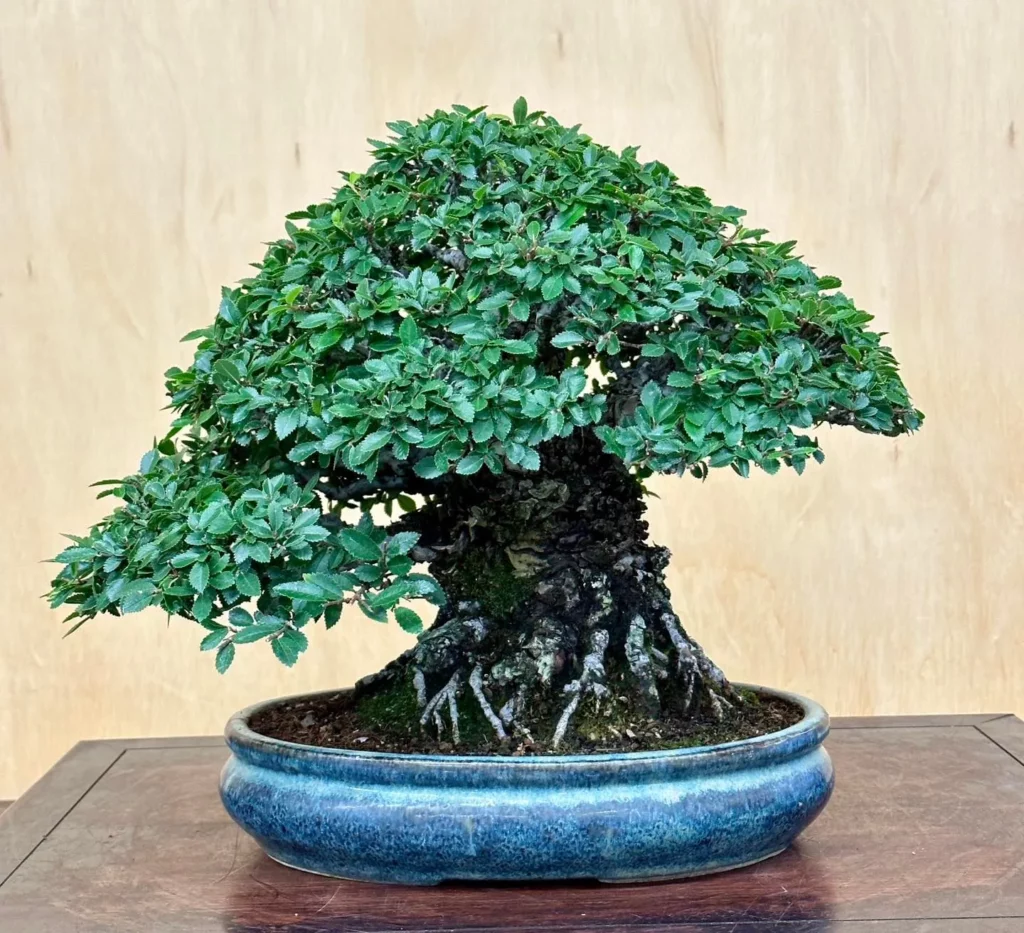Welcome to the world of bonsai, where the art of displaying miniature trees becomes a captivating showcase of nature’s beauty and your artistic flair. Whether you’re a seasoned enthusiast or just starting your bonsai journey, displaying these living masterpieces adds an exquisite touch to your home decor. Each bonsai tree is carefully cultivated to resemble its full-sized counterpart, making it a miniature work of art that brings nature indoors.
Displaying bonsai is more than just a hobby; it’s a way to express your creativity and infuse your space with a sense of tranquility. As you delve deeper into the art of bonsai, you’ll discover the principles of patience, balance, simplicity, and beauty that it embodies. This ancient Chinese tradition has taken root worldwide, with Japan elevating it to a high art form. By investing time into researching optimal ways of presenting bonsai, you can showcase the tree’s beauty and craftsmanship, while also building confidence in your skills.
In this article, we’ll explore the importance of formal bonsai display and guide you through the process of choosing the right display stand, arranging the bonsai on it, incorporating companion plants, and utilizing negative space to create visually stunning displays. We’ll also provide essential care tips for nurturing your bonsai trees in your outdoor space, as well as creative ideas to incorporate them into your outdoor decor. Whether you’re a bonsai enthusiast or simply seeking to add natural elegance to your home, this article will inspire and guide you on your bonsai journey.
The Importance of Formal Bonsai Display

Formal bonsai display is of utmost importance when showcasing these artistic masterpieces, as it allows the true beauty and craftsmanship of each tree to shine. Each bonsai tree is a testament to years, or even decades, of patient cultivation and shaping. Formal display not only elevates bonsai as an art form but also boosts the confidence of enthusiasts, knowing that their creations are being presented in the best possible light.
When it comes to formal bonsai display, every detail matters. From choosing the right display stands to arranging the trees using specific techniques, every decision contributes to the overall aesthetic impact. Formal display offers a platform to highlight the intricate details of each branch and leaf structure, allowing viewers to appreciate the meticulous craftsmanship that goes into creating these miniature natural wonders.
Moreover, displaying bonsai as an art form opens up a world of possibilities for enthusiasts to express their creativity and eye for design. By carefully selecting suitable accessories, creating optimal lighting and humidity levels, and maintaining the trees regularly, the full potential of bonsai as an artistic masterpiece can be realized.
Choosing the Perfect Display Stands
One of the key elements of formal bonsai display is choosing the perfect display stands. These stands serve as the foundation upon which the beauty of the bonsai tree can be showcased. Traditional Japanese display stands, crafted from wood, exude a minimalistic elegance that complements the natural beauty of the bonsai tree. For a more modern aesthetic, display stands made from materials like metal, glass, or acrylic can create sleek and contemporary looks. Clay-based Tokoname stands offer both support and an earthy aesthetic to enhance the overall presentation.
Considerations such as the size, shape, and material of the display stand are critical. The stand’s size should be proportionate to the bonsai tree, ensuring that it neither overwhelms nor diminishes the tree’s beauty. The shape of the stand should harmonize with the natural growth pattern of the tree, accentuating its form. The choice of material can provide warmth or a specific aesthetic, further enhancing the overall visual impact of the display.
Arranging the Bonsai Trees
Arranging the bonsai trees on the display stands requires careful thought and consideration. Techniques such as asymmetrical arrangements and triangular or pyramidal shapes create dynamic energy and balance, adding visual interest to the overall composition. Creating depth in the display by using multi-tiered stands or positioning branches at varying heights adds a sense of three-dimensionality.
It is essential to respect the natural growth patterns of the bonsai tree when arranging its branches. Avoid excessive cutting or forcing unnatural angles, as this can detract from the tree’s beauty. Each element within the display, including accent plants and rocks, should interact harmoniously with the bonsai tree, creating a cohesive and visually captivating composition. The careful use of negative space allows viewers to fully appreciate the beauty of each individual element and ensures a serene and balanced display.
Choosing the Right Display Stand
When it comes to displaying your bonsai tree, choosing the right display stand is essential to showcase its beauty and craftsmanship. Display stands for bonsai come in various designs, sizes, and materials, allowing you to find the perfect match for your miniature masterpiece.
No products found.
If you prefer a traditional look, consider opting for a display stand made of wood. Traditional Japanese display stands have a minimalistic design that complements the natural beauty of the bonsai tree. These stands create a sense of harmony between the tree and its surroundings, allowing the tree to take center stage.
On the other hand, if you’re looking to add a modern touch, there are display stands made of materials like metal, glass, or acrylic that can create a sleek and contemporary look. These stands provide a stylish backdrop for your bonsai tree, giving it a modern and sophisticated appeal.
For those who appreciate a touch of tradition and artistic flair, Tokoname stands are an excellent choice. Made from clay and glazed in earthy colors, these stands offer both support and aesthetic enhancement for your bonsai tree. The natural tones of the clay and the intricate craftsmanship of the glaze provide a unique and eye-catching display.
When choosing a display stand, consider factors such as the size of the stand in relation to the tree. The stand should be proportional to the tree, neither too small nor too large, to ensure a harmonious visual balance. Additionally, consider the shape of the stand. Choose a shape that complements the tree’s natural growth pattern, enhancing its overall appearance.
Material is another important consideration. Wood stands can add warmth and a traditional feel, while metal, glass, or acrylic stands can offer a contemporary and sleek aesthetic. Select a material that aligns with the desired ambiance and aesthetic appeal you want to achieve.
Factors to Consider When Selecting a Display Stand

When choosing a display stand for your bonsai tree, it’s important to consider several factors to ensure the optimal presentation and showcase of your miniature masterpiece.
Size and Proportion
The size of the display stand should match the size of your bonsai tree, ensuring a proportionate and balanced composition. A stand that is too large or too small can create an unappealing visual imbalance.
Shape and Natural Aesthetics
Consider the shape of the display stand and how it complements the natural growth pattern of your bonsai tree. The stand should enhance the tree’s unique form, balance any heavy branches, and create a harmonious visual flow.
Material and Style
The material used in crafting the display stand can contribute to the overall aesthetics and feel of the display. Traditional wooden stands provide warmth and a natural look, while metal, glass, or acrylic stands add a contemporary touch. Choose a material that resonates with your personal style and complements the overall ambiance of the space.
Indoor or Outdoor Use
If you plan to display your bonsai tree indoors, consider the location and style of your interior decor. On the other hand, if you intend to showcase your bonsai outdoors, durability becomes a key factor. Opt for materials like iron or stone that can withstand environmental factors such as weather and temperature fluctuations.
Attention and Focus
Think about the level of attention and focus you want to draw to your bonsai tree versus its container. The display stand should enhance the overall presentation without overshadowing the beauty of the bonsai itself. It should tastefully frame the tree and allow it to be the center of attention.
Customization and Flexibility
Consider whether you’d like to have the option to customize or adjust the display stand. Some stands offer adjustable parts or multiple levels, allowing you to experiment with different arrangements and adapt to your evolving bonsai tree collection.
Arranging the Bonsai on the Display Stand
Properly arranging your bonsai tree on the display stand is essential to enhance its aesthetic quality. By utilizing various techniques, you can create a visually captivating arrangement that showcases the beauty of the bonsai tree.
One of the key techniques is to embrace asymmetrical arrangements. Creating a sense of dynamic energy and balance, asymmetry adds interest and uniqueness to the display. Consider positioning the tree’s branches and foliage in a way that creates an asymmetrical composition.
No products found.
Another technique is to form a triangular or pyramidal shape with the branches. This classic design principle adds structure and harmony to the arrangement, drawing the viewer’s eye towards the focal point of the bonsai tree.
Depth is another crucial element to consider when arranging your bonsai on the display stand. You can achieve depth by using multi-tiered stands or by positioning branches at varying heights. This creates visual interest and allows different aspects of the tree to be appreciated from different angles.
It’s important to respect the bonsai tree’s natural growth patterns when arranging the branches. Avoid excessive cutting or forcing unnatural angles, as this can disrupt the tree’s health and aesthetics. Instead, work with the tree’s existing structure and enhance its natural beauty.
As you arrange the bonsai on the display stand, keep in mind the harmony between different elements within the display. Accent plants and rocks can be incorporated to create a cohesive and harmonious composition. Ensure that these elements interact seamlessly with the bonsai tree, enhancing its beauty without overpowering it.
Lastly, negative space is an essential design element to consider. Leaving empty spaces within the display prevents overcrowding and allows each element to shine individually. By promoting a sense of serenity and simplicity, negative space creates a balanced and visually pleasing arrangement.
Creating Unity with Companion Plants
Companion plants play a vital role in formal bonsai displays, adding depth, texture, and contrast to the arrangement. By carefully selecting companion plants, you can enhance the beauty of your bonsai trees and create a unified and visually captivating display.
Enhancing Depth and Texture
Companion plants bring depth to the arrangement, making the display visually interesting from every angle. By incorporating plants with different heights, leaf shapes, and textures, you can add layers and create a sense of depth in the display. Consider using mosses, small ferns, or colorful succulents to bring variety and texture to your bonsai arrangement.
Creating Color Contrast
Contrast is key in creating a visually appealing display. Introduce companion plants with foliage colors that contrast with your bonsai tree to make it stand out. For example, if your bonsai tree has dark green leaves, consider adding a companion plant with variegated leaves or a flowering succulent to add a pop of color. The contrasting colors will create a visually striking effect and draw attention to the bonsai.
Using Rocks for Visual Interest
Rocks can be incorporated into the bonsai display to add texture and complement the elements within the arrangement. Place rocks strategically around the base of the bonsai tree or use them to create a miniature landscape. The addition of rocks adds a natural element and helps create a sense of unity between the bonsai tree and its environment.
Avoiding Overshadowing
When selecting companion plants, it’s important to choose them sparingly to avoid overshadowing the bonsai tree. The bonsai tree should remain the focal point of the display, with the companion plants serving to enhance its beauty. Select companion plants that are smaller and have a complementary growth habit to ensure that they do not detract attention from the primary bonsai tree.
Beyond Symmetry: The Power of Negative Space
Negative space, often overlooked in formal bonsai displays, holds immense power in creating a harmonious and captivating aesthetic. While the temptation may arise to fill every available space, incorporating negative space brings about a sense of serenity, balance, and direction. By allowing for empty areas in the display, the viewer’s focus is naturally drawn towards the most expressive parts of the bonsai, highlighting their beauty and significance.
A clean and uncluttered display is essential to maintain a tranquil ambiance and showcase the bonsai’s elegance. Overly symmetrical layouts can feel artificial and contrary to nature’s organic patterns. Instead, prioritize creating a visually pleasing environment where the negative space complements and enhances the bonsai’s aesthetic qualities.
Imagine a bonsai display where carefully positioned branches, meticulously trimmed foliage, and an intentional arrangement cooperate with the deliberate inclusion of empty spaces. This strategic utilization of negative space creates a serene oasis that evokes a sense of calmness and aesthetic balance.
Benefits of Negative Space in Bonsai Displays:
- Serenity: Negative space fosters a peaceful atmosphere, allowing the viewer to appreciate the bonsai’s tranquility and subtlety.
- Balance: By balancing positive elements with negative space, a visually pleasing equilibrium is achieved, which enhances the overall composition.
- Focus: Negative space redirects the viewer’s attention to the most visually appealing aspects of the bonsai, emphasizing their significance and beauty.
- Aesthetics: Incorporating negative space into the display elevates the overall visual appeal, as it showcases the bonsai’s elegance and artistry.
Essential Care Tips: How to Properly Maintain and Nurture Your Bonsai Trees in Your Outdoor Space

Proper care and attention are essential to keep bonsai trees flourishing in your outdoor space. Follow these essential care tips to ensure the health and beauty of your bonsai trees:
- Choose the right bonsai tree: Consider the climate, sunlight exposure, and available space in your outdoor area when selecting a bonsai tree. Different species have different requirements, so choose one that thrives in your specific environment.
- Master proper watering techniques: Check the moisture level of the soil regularly and water thoroughly when needed. Avoid overwatering, as it can lead to root rot. Maintaining the right balance of moisture is crucial for the health of your bonsai tree.
- Regularly prune and shape: Pruning is essential to maintain the shape and aesthetic appeal of your bonsai tree. Remove any dead or overgrown branches and trim back excessive growth. Understand the different bonsai styles and use the appropriate pruning tools for precise shaping.
- Fertilize at the right time: Provide your bonsai tree with the necessary nutrients by fertilizing it at the appropriate times. Use a balanced fertilizer specifically designed for bonsai trees. This will promote healthy growth and vibrant foliage.
- Protect from extreme weather conditions: Shield your bonsai tree from harsh weather elements such as frost, strong winds, and excessive heat. Move it to a sheltered area or provide proper insulation during extreme weather conditions to prevent damage to the tree.
Creative Ideas for Incorporating Bonsai Trees into Your Outdoor Decor

Incorporating bonsai trees into your outdoor decor can transform the space into a serene oasis. These visually captivating miniature trees bring a sense of calmness to any environment, creating a tranquil ambiance where you can escape the hustle and bustle of daily life. Here are some creative ideas to inspire you in incorporating bonsai trees into your outdoor decor:
- Create a Bonsai Gallery Wall: Showcase your collection of bonsai trees by displaying them on a featured wall in your outdoor space. Arrange the trees in an aesthetically pleasing manner, paying attention to the variation in sizes, shapes, and foliage colors. This unique and visually striking display will undoubtedly become a conversation starter.
- Lining Garden Pathways: Transform your garden pathways into captivating walkways by lining them with bonsai trees. The miniature trees will guide your steps and add a touch of elegance to your outdoor space. Choose trees that complement the surrounding flora and vary the heights and styles for a visually dynamic display.
- Incorporate Bonsai Trees into Water Features: Enhance the beauty of your outdoor water features, such as ponds or fountains, by placing bonsai trees near the water’s edge. The reflection of the trees in the water will create a mesmerizing effect, adding depth and tranquility to the overall scene.
- Use Bonsai Trees as Accent Pieces: Select a few bonsai trees with unique characteristics, such as interesting trunk shapes or stunning flowers, and use them as focal points in your outdoor decor. Place them on pedestals or decorative stands to elevate their presence and draw attention to their exquisite beauty.
- Create Bonsai Trellises: Combine the elegance of bonsai trees with the functionality of trellises by training vines to grow on a specially designed structure. Intertwine the branches of the bonsai trees with the growing vines, forming a harmonious blend of natural elements that adds charm and character to your outdoor space.
Choosing the Perfect Bonsai Tree: A Guide to Finding the Ideal Miniature Tree for Your Outdoor Area
Choosing the perfect bonsai tree for your outdoor area requires careful consideration. To ensure the tree thrives in its new environment, you need to take into account various factors such as climate suitability, sunlight exposure, and available space. Different bonsai tree varieties have different requirements, so it’s crucial to research and understand the specific needs of each tree.
When selecting an outdoor bonsai tree, consider popular options that are known to thrive in outdoor environments. Some of these options include:
No products found.
- Juniper Bonsai: With its delicate foliage and elegant aesthetic, the juniper bonsai is a popular choice for outdoor bonsai enthusiasts. It is known for its ability to withstand different climates and adapt to various conditions.
- Japanese Maple Bonsai: The Japanese maple bonsai is cherished for its vibrant, colorful leaves and graceful branches. It adds a touch of elegance and beauty to any outdoor space.
- Pine Bonsai: Pine bonsai trees are admired for their unique needle-like foliage and captivating presence. They are hardy and can withstand harsh weather conditions, making them an ideal choice for outdoor areas.
The Rewards of Bonsai Care
Caring for bonsai trees is not only a rewarding experience but also a therapeutic one. When you take the time to nurture and care for these miniature trees, you create a deep bond with nature that brings a sense of joy and tranquility to your life.
By providing the proper care and attention, bonsai trees can flourish in your outdoor sanctuary, adding beauty and serenity to the space. As you watch your bonsai tree grow and thrive, you’ll be rewarded with the beauty of these miniature works of art. The intricate details of the tree’s branches, leaves, and trunk become a testament to your dedication and love for bonsai care.
Not only do bonsai trees enhance the visual appeal of your outdoor environment, but they also offer numerous rewards. As these miniature trees photosynthesize and release oxygen, they improve the air quality in your surroundings. The act of caring for bonsai, whether it’s watering, pruning, or shaping, can also have a positive impact on your well-being. It allows you to disconnect from the stresses of everyday life and reconnect with nature, promoting relaxation and reducing stress levels. Creating and maintaining a bonsai garden provides a long-lasting and visually captivating outdoor space where you can find solace and serenity.
After this check out our other articles on:
FAQ
Can displaying bonsai be considered an art form?
Yes, displaying bonsai is not only a horticultural pursuit but also a spiritual one, reflecting principles of patience, balance, simplicity, and beauty.
Why is formal display of bonsai important?
Formal display of bonsai is crucial to highlight the tree’s beauty and craftsmanship. It allows for the appreciation of intricate details and elevates bonsai as a high art form.
What should I consider when choosing a display stand for bonsai?
Factors to consider when choosing a display stand include the size of the stand in relation to the tree, the shape that complements the tree’s growth pattern, and the material for aesthetics and warmth.
What factors should I consider when selecting a display stand for outdoor bonsai?
When selecting a display stand for outdoor bonsai, factors to consider include durability to withstand environmental factors, attention drawn to the tree versus its container, and customization options for flexibility.
How should I arrange the bonsai tree on the display stand?
Techniques such as asymmetrical arrangements, triangular or pyramidal shapes, and creating depth by using multi-tiered stands or varying branch heights can create a visually dynamic and balanced display.
Should I incorporate companion plants in a bonsai display?
Yes, companion plants such as mosses, small ferns, and flowering succulents can complement and enhance the beauty of bonsai trees, adding depth, texture, and color contrast to the arrangement.
How does negative space contribute to a bonsai display?
Negative space creates a sense of serenity, balance, and allows the viewer’s focus to be directed towards the most expressive parts of the bonsai. It also prevents a cluttered display and promotes appreciation of each element’s beauty.
What care tips should I follow for outdoor bonsai trees?
Proper care for outdoor bonsai trees includes choosing the right tree for the outdoor environment, proper watering techniques, regular pruning and shaping, fertilizing, and protection from extreme weather conditions.
How can I incorporate bonsai trees into my outdoor decor?
Creative ideas for incorporating bonsai trees include creating a bonsai gallery wall, lining garden pathways with bonsai trees, incorporating them into water features or as accent pieces, and using them to create trellises.
How do I choose the perfect bonsai tree for my outdoor area?
Factors to consider when choosing a bonsai tree for your outdoor area include climate suitability, sunlight exposure, available space, and understanding the specific needs of the tree variety.
What are the rewards of caring for bonsai trees?
Caring for bonsai trees is not only rewarding but also therapeutic. It brings a sense of joy and tranquility, witnessing the growth and beauty of these miniature works of art, improving air quality, reducing stress levels, and creating a visually captivating outdoor environment.




